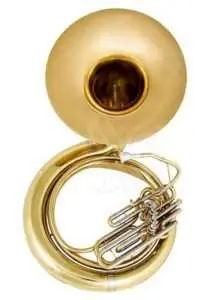Testing your musical ear: how is it done?
Contents
The concept of “musical ear” should be considered from the point of view of the ability to quickly capture, recognize, remember and reproduce heard sounds. Artificial development and cultivation of musical ear requires the use of systematized methods with which the best results can be achieved.
A correct, high-quality test of musical hearing will reveal in a child, and not only in a child, abilities that should be developed.
When is it necessary to diagnose musical hearing?
In principle – at any time! In general, there is an opinion that a person acquires an ear for music at the genetic level, but this is only half true. In order to become a professional musician, no special talent is required, and even the presence of some “rudiments” of it guarantees the possibility of obtaining high results in the process of regular practice. Here, as in sports, training decides everything.
How is musical hearing tested?
Diagnostics of musical abilities and testing of musical hearing in particular should be carried out exclusively by a professional music teacher. The process itself consists of several stages, as a result of which it becomes possible to draw certain conclusions (although one does not have to rely on the reliability of the conclusions obtained – often, often they turn out to be erroneous simply because the child perceives the test situation as an exam and is worried). It is important to diagnose hearing according to three main criteria:
- presence of a sense of rhythm;
- assessment of voice intonation;
- musical memory abilities.
Rhythmic hearing test
Rhythm is usually checked like this. The teacher first taps a pencil or other object on the table (or claps his palm) with a certain rhythm (best of all, a melody from a famous cartoon). Then he invites the subject to repeat it. If it accurately reproduces the real rhythm, we can talk about the presence of hearing.
The test continues: examples of rhythmic patterns become more complex. Thus, it is possible to test musical hearing for a sense of rhythm. It should be noted that it is the sense of rhythm – in the matter of the presence or absence of hearing – that is the main and accurate assessment criterion.
Voice intonation: is it sung clearly?
This is not the main criterion for “sentencing”, but a procedure to which all candidates for the title of “listener” are subjected without exception. To identify the correct intonation of the voice, the teacher hums a familiar, simple melody, which the child repeats. In this case, the purity of the voice and the prospects for vocal training are revealed (timbre beauty – this applies only to adults).
If a child does not have a very strong, melodic and clear voice, but is found to have hearing, he may well attend lessons in playing an instrument. In this case, it is the test of musical ear that is important, and not the presence of excellent vocal abilities. Yes, and one more thing: if a person sings dirty or doesn’t sing at all, then it’s a mistake to think that he has no hearing!
Guessing notes on an instrument: a game of hide and seek
The one being tested turns his back to the instrument (piano), the teacher presses any of the keys and then asks to find it on the keyboard. The test is carried out in the same way with other keys. The potential “listener” must accurately guess the notes by pressing the keys and listening to the sounds. This is somewhat reminiscent of the well-known children’s game of hide and seek, only in this case it is a musical game of hide and seek.



